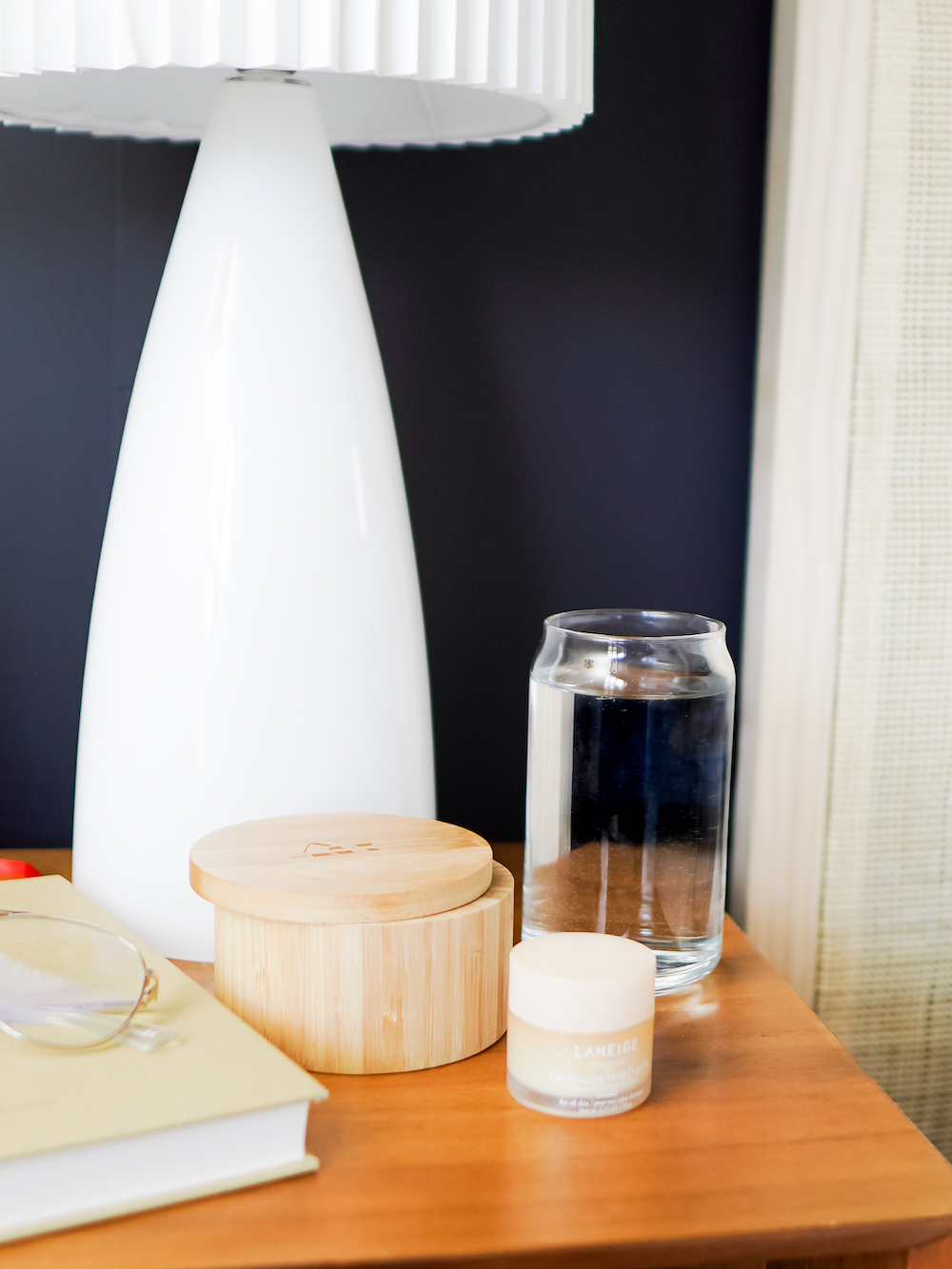If the words “painful sex” ring a bell, you may have also experienced some surprising emotions that come along with this difficult health issue: Shame, embarrassment, self-blame, feeling self-conscious about being uptight or not “fun in bed,” to name just a few. Whether you’ve just begun to experience painful sex or it’s something you’ve dealt with your whole life, you should know—it’s not normal and there are solutions! I’d like to acknowledge that if this is something you’ve been living with, you’re not alone, it’s common, and it’s actually never too late to figure out what causes pain during sex.
It takes courage and confidence to put your foot down when sex isn’t feeling pleasurable, and it takes time, access to healthcare, and a good provider to diagnose you correctly. It’s can be a lot for some people to confront this, and it’s a sensitive subject… so it’s honestly no wonder that many people choose to quietly suffer during painful sex or simply abstain from pleasure. Fortunately, times are changing, and although it hasn’t always been easy for people with vaginas to get a good diagnosis, general awareness and knowledge about the treatment of dyspareunia (painful sex) are spreading like wildfire in the women’s health community in the last five years.
If you’re dealing with painful sex, take a look at these common causes and learn a little bit more about the routes to take to find relief.


Childbirth
An exceedingly common cause of pain during sex often stems from an injury to the vagina, perineum, or pelvic floor musculature post-birth. While the majority of vaginas tend to heal totally normally after birth, there can be complications that linger after birth or come up in the healing process that may lead to pain with sex. The good news is they are often totally treatable! Integrating sex back into life after a baby usually occurs after the last post-birth appointment. Because of this alongside a general lack of screening and education about painful sex, the condition comes as a surprise to many people. This combined with a lack of education/discussion from providers in the postpartum period means many birthing people left wondering what is going on, confused or scared they “ruined their body,” despite the fact this pain is out of their control. Below are a few of the specific causes of pain with sex post-birth as well as the recommended providers to see
Causes of Painful Sex After Birth
- Vaginal dryness due to low estrogen levels as a side effect of breastfeeding
- Trigger points, which according to the American Physical Therapy Association, “are small hyperirritable spots located in a taut band of skeletal muscle”, that may be caused by improper healing after childbirth are often the culprit for pain during sex.
- Scar tissue from a vaginal, perineal, or rectal laceration or tear during birth
- Tissue or skin that doesn’t close entirely after receiving stitches
- Tissue or skin that is sutured too tight after a tear
- Skin tags
- Improperly sutured lacerations/tears
Common Treatment Options Include:
- If pain is due to breastfeeding induced low estrogen levels topical application of vaginal estrogen may decrease atrophy of vaginal tissue or the pain should stop with the cessation of breastfeeding
- Topical application of silver nitrate by a midwife or doctor to close unhealed wounds / open tissue
- Pelvic floor physical therapy to assess for trigger points, hyper tone, and muscle weakness or prolapse of the bladder or rectum causing pain
- Vaginal dry needling (done by a pelvic floor physical therapist)
- Vaginal and perineal massage to soften/break up painful scar tissue
- Removal of skin tags
- Surgical revision of improperly healed tears
Who to see:
- Pelvic Floor Physical Therapy (often covered by insurance!)
- Women’s Health Nurse Practitioner or Certified Nurse Midwife
- OB-GYN


Vaginismus
Vaginismus is a painful condition classified as a genito-pelvic penetration and pain disorder that affects anywhere from five to forty percent of women, with an unclear incidence due to the lack of reporting. Folks with this condition typically have great difficulty with any kind of penetration or insertion of anything into the vagina such as during sex, using tampons, or may experience burning or stinging during sex. This disorder is thought to be both emotional and physical with physical symptoms often leading to emotional symptoms and vice versa continuing to perpetuate the issue.
The cause of vaginismus is specific to the affected individual and may be attributed to medical vaginal conditions that originate at birth (congenital conditions), inflammation, change in vaginal blood flow causing atrophy (shrinking) of vaginal tissue, loss of skin integrity, or nervous system issues. The difficulty could also stem from deep-rooted belief systems and socialization to be scared of sex, think sex is wrong or bad or discomfort with sex in general. Lastly, someone may deal with this condition as a side effect of PTSD from sexual assault or trauma. The treatment is different for each person since the root cause of the condition is so individualized.
Common treatment options include:
- Desensitization therapy
- Using a vaginal dilator to help someone adjust to sensation with penetration
- Vaginal botox injections
- Pelvic floor exercises and relaxation techniques (reverse kegals)
- Myofascial release of pelvic muscles, abdominal and thigh muscles
- Hypnotherapy
- Talk therapy
- Anti-anxiety medications
- Sensate focus exercises to help with vaginal relaxation and increase libido
Who to see:
- Pelvic Floor Physical Therapist (often covered by insurance!)
- Sex Therapist
- Pelvic Pain Specialist
- Women’s Health Nurse Practitioner or Certified Nurse Midwife
- OB-GYN


Vulvodynia
According to the National Vulvodynia Association, “Vulvodynia, simply put, is chronic vulvar pain without an identifiable cause. The location, constancy, and severity of the pain vary among sufferers,” with burning as the most commonly reported symptom. The specifics in regards to where the pain occurs, how long it lasts, and if it is generalized to the entire vulvar area, the clitoris, or localized to one area in the vulva can be diagnosed by your provider. The majority of women who experience this condition have localized vulvodynia or in other words, have pain when one certain spot or place on the vulva is stimulated or touched such as with, sexual intercourse, tampon insertion, a gynecologic examination, prolonged sitting, and/or wearing fitted pants. The cause of this condition is not totally clear, and more research needs to be done. It is clear however that this condition should be diagnosed by pain outside of the presence of an infection.
According to the National Vulvodynia Association, a few suspected causes of vulvodynia are listed below:
- Injury or irritation of the nerves that transmit pain from the vulva to the spinal cord
- An increase in the number and sensitivity of pain-sensing nerve fibers in the vulva
- Elevated levels of inflammatory substances in the vulva
- An abnormal response of different types of vulvar cells to environmental factors such as infection or trauma
- Genetic susceptibility to chronic vestibular inflammation, chronic widespread pain, and/or inability to combat infection
- Pelvic floor muscle weakness, spasm, or instability
Treatment options include:
- Identifying and discontinuing irritant
- Oral “Pain-Blocking” Medications
- Tricyclic Antidepressants
- Serotonin-Norepinephrine Reuptake Inhibitors
- Anticonvulsants
- Opioids
- Topical Hormonal Creams (estrogen and testosterone
- Topical Anesthetics
- Topical Anti-convulsants or antidepressants
- Pelvic Floor PhysicalTherapy
- Nerve Blocks
- Neurostimulation and Spinal Infusion Pump
- Surgery
Who to see:
- Gynecologist or Urogynecologist
- Pelvic Pain Specialist
- Pelvic Floor Physical Therapist
- Women’s Health Nurse Practitioner or Certified Nurse Midwife
- Neurologist
- Dermatologist
Menopause
According to the North American Menopause Society (NAMS), somewhere between seventeen and forty-five percent of women experience painful sex during their lives during the peri and post-menopausal period. Changes in hormone levels can leave the vaginal tissue-thin, decrease natural vaginal lubrication, decrease vaginal blood flow and elasticity, all causing significant dyspareunia (pain with sex.) Additionally, once someone experiences a painful sexual interaction, the psychological fallout afterward may cause anxiety, fear, and stage fright inhibiting the ability to engage in sexual relations both physically and mentally in the future. Aside from physical barriers to enjoying sex, mental and emotional disinterest due to low libido and inability to become aroused, which are also due to changes in hormones are common complaints amongst post-menopausal patients.
Treatment Options Include:
- RX topical estrogen for vaginal atrophy
- Vaginal moisturizers and lubricants (if the pain doesn’t improve with these see a provider)
- Engage in regular sexual intercourse as stimulation increases blood flow
- Vaginal Dilators for painful sex
- Pelvic Floor Physical Therapy for pain with sex
- Sex Therapy / Counseling to address low libido concerns
- Yoga to increase arousal and libido
Who to See:
- OB-GYN
- Gynecologist
- Women’s Health Nurse Practitioner or Certified Nurse Midwife


Infection: Yeast, Urinary Tract or Sexually Transmitted Infections
Infections in the vulva, vaginal, urethra, cervix, or uterus cause inflammation, irritation, itching, bright red or raw mucosal tissue in the genitals, open sores, or itching bumps and can very well cause pain with sex. Signs that you have an infection as opposed to a chronic pain condition or hormonal imbalance may be foul-smelling vaginal discharge, increased discharge, unexplained bleeding after sex, pain with deep vaginal penetration, pain with urination, thick white clumpy discharge, painful or itchy sores or lesions on the vulva, or vaginal swelling. If you’re worried you may have an infection or have had unprotected intercourse consider seeing a provider for the appropriate diagnosis or STI testing.
Infections that may cause pain with sex:
- Gonorrhea
- Herpes
- Molluscum Contaigiosum (if sores become infected)
Pelvic Inflammatory Disease (a condition that results from an untreated STD) - Chlamydia
- Trichomoniasis
- Urinary Tract Infections
- Post abortive infection
- Post IUD insertion infection
Who To See: *Planned Parenthood providers are experts at this kind of diagnosis
- OB-GYN
- Gynecologist
- Women’s Health Nurse Practitioner or Certified Nurse Midwife
To wrap things up, I hope that this article has helped some of you find answers to painful conditions that are curable! The takeaway is that if you’re experiencing pain with sex, don’t assume it’s normal, it’s something you have to live with or can’t be cured. If you see one provider who gives you an answer that doesn’t feel satisfactory or downplays your pain, find someone else. It’s okay to tell your provider you’ve done the research and you think you have ____, fill in the blank. If your OB-GYN or practitioner doesn’t seem well informed or give you resources, consider finding a pelvic pain specialist or ask for a pelvic floor physical therapy referral to keep hunting for an answer. Don’t be afraid to ask for referrals to specialists as needed. Best of luck friends, and pass this article on—spread the word! Sex shouldn’t be painful and you can find answers.





